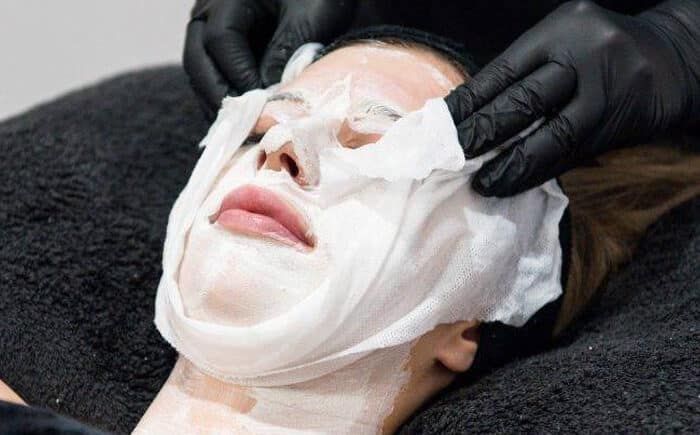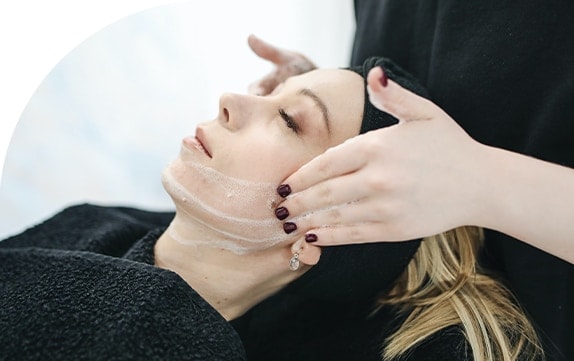Types of Acne Facials

Acne is a common skin condition that affects people of all ages and genders. It can be caused by various factors such as:
- Hormones
- Genetics
- Lifestyle choices
- Medical conditions
Facials can be one of the most effective treatments to fight acne breakouts as they help reduce the causes of acne. Furthermore, they can help keep the skin healthy and vibrant. They work by removing excess oil and dirt from the pores. This is what can lead to future breakouts. Acne facials also have ingredients that soothe inflammation while reducing bacteria buildup on the skin’s surface.
When selecting an acne facial, it’s crucial to consider the products used to ensure they don’t irritate the skin or worsen existing acne. Ingredients like salicylic acid or benzoyl peroxide are commonly used in these treatments. This is because they help kill bacteria while breaking down excess oil on the skin’s surface.
Cleansers containing glycolic acid may also be useful for oily or dry skin as they clarify pores and help them heal faster after a breakout has occurred. Furthermore, Jojoba oil or other non-comedogenic products can provide necessary hydration without clogging pores, which is vital for sensitive or combination skin prone to breakouts.
Suggestions for Homecare
Remember that regular facials are only part of proper skin care. It’s vital that an individualized deep cleansing routine at home is essential to maximize results over time.
Non-comedogenic products designed for oily or sensitive skin should be used. These include lotions, creams, and cleansers to prevent clogged pores. It’s better to use a few basic products like a cleanser, toner, and moisturizer suited to individual needs rather than too many different products at once.
Oily skin types should generally get facials every 4-6 weeks, whereas those with dry skin could benefit from more frequent visits every 2-3 weeks, depending on the severity of the specific case(s).
Types of Facials Best For Acne Prone Skin
Clarifying facial, which regulates sebum production. It reduces the appearance of breakouts by targeting excess oil production in the pores. It also reduces bacteria on the surface of the skin.
Collagen facials help treat acne scars by introducing collagen into skin cells, promoting healing, and smoothing out depressions caused by scarring or uneven tone.
Deep pore cleansers remove blackheads and whiteheads from deep within pores and unclog them. This is ideal for removing impurities from the face and reducing future breakouts.
Probiotic facials restore friendly bacteria and balance to the complexion, fighting off harmful bacteria while restoring moisture and hydration.
Hyaluronic Acid facials lock moisture into cells while preventing dirt, debris, and oils from clogging up pores, providing hydration without exacerbating existing breakouts.
Exfoliating Facials remove dead skin cells, dirt, debris, and oils that accumulate over time. This offers an extra layer of protection against future blemishes while stimulating cell turnover for clearer and brighter complexions.
Deep Cleanse Facial treatments unclog pores using deep cleansing products to improve circulation and result in brighter, more radiant complexions.
Microdermabrasion facial treatments<span style=”font-weight: 400;”> gently exfoliate away dull surface layers to leave skin refreshed, best done once a month.
Oxygen facial treatments introduce oxygen back into the skin’s surface to kill off remaining bacteria, causing ongoing breakouts without harsh chemicals and increasing circulation to flush out toxins faster.
Peel facial treatments use natural ingredients and targeted acids to provide relief for inflamed pimples but should only be done twice a year to avoid damaging delicate tissue around affected areas.
LED light therapy face treatments can help reduce inflammation and bacteria, promoting healing and healthy skin.
Of course, you can use these treatments as stand-alone treatments, but any combination can be good as well. Be sure that you reach out to your trusted esthetician to ensure that you get the best treatment for your particular situation.
What to Expect from a Facial
When selecting a facial treatment plan for yourself or someone else who has oily or combination skin (which often causes more severe breakouts), some steps must be taken beforehand to ensure optimal results.
First, be sure that all makeup is removed prior to beginning any treatment so as not to cause further irritation during application. You should start any facial with clean, dry skin for the best results.
Once you have had your facial, you will need to apply sunscreen since many products used during this process may increase sensitivity toward sunlight exposure. This will help protect against sunburns or other damage caused by UV rays.
Furthermore, it’s important not only during but also after each session to maintain a clear, healthy-looking complexion between treatments through regular cleansing. You should always wash your face twice daily using mild soap, followed up with moisturizing lotion appropriate for your skin’s needs. This will help keep oil at bay. If you wash without applying proper hydration, you could increase the oil production in your skin. This is why it’s important to ensure that you are moisturizing when washing your face.
Additionally, you need to follow the aftercare instructions for your particular facial. Some facials will have very little to no need for follow-up care. However, most will require you to avoid the sun for a few days and to take good care of your skin while it heals.
How Often Should You Get a Facial for Oily Skin?
Generally speaking, it is recommended that those with very dry or sensitive skin get facials every 4-6 weeks, while those with normal/oily combo skin can usually wait 8-10 weeks between treatments. It will depend on lifestyle factors such as stress levels and diet habits since these can influence how quickly our bodies produce new oils leading us prone to develop clogged pores again faster than usual.
It is also important not to forget basic facial care like washing your face regularly (at least twice daily), making sure you choose non-comedogenic cleansers/moisturizers so they won’t clog up your pores, plus wearing sunscreen daily.
After having a professional treatment done, make sure to follow all post-facial care tips provided by your esthetician, plus keep up a consistent skincare routine at home to maintain a clear, healthy complexion!
Facials can be an excellent way to treat and prevent acne breakouts. However, the most important thing is to keep up with regular skincare routines at home and get facials regularly to maintain clear and healthy skin.


